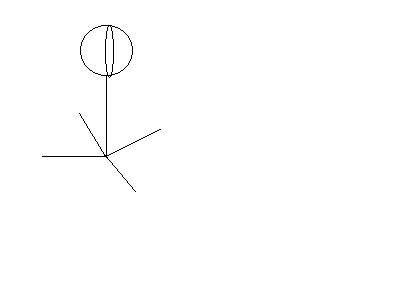My ASP-350 has an eggbeater at the top.The antenna is an aluminum groundplane.
I was reading this about the eggbeater-
"It produces smooth omnidirectional horizontal polarity at the horizon.Above the horizon the pattern transforms to right hand circular off the top "
Could someome explain what effect this has with the vertical antenna it is attached to ?
Below is a simplified drawing of my antenna. The radials are 102" that are horizontal, not slanted down.

 </p>Edited by: <A HREF=http://p067.ezboard.com/bworldwidecbradioclub.showUserPublicProfile?gid=sonwatcher>Sonwatcher</A> at: 3/12/05 5:33 am
</p>Edited by: <A HREF=http://p067.ezboard.com/bworldwidecbradioclub.showUserPublicProfile?gid=sonwatcher>Sonwatcher</A> at: 3/12/05 5:33 am
I was reading this about the eggbeater-
"It produces smooth omnidirectional horizontal polarity at the horizon.Above the horizon the pattern transforms to right hand circular off the top "
Could someome explain what effect this has with the vertical antenna it is attached to ?
Below is a simplified drawing of my antenna. The radials are 102" that are horizontal, not slanted down.



